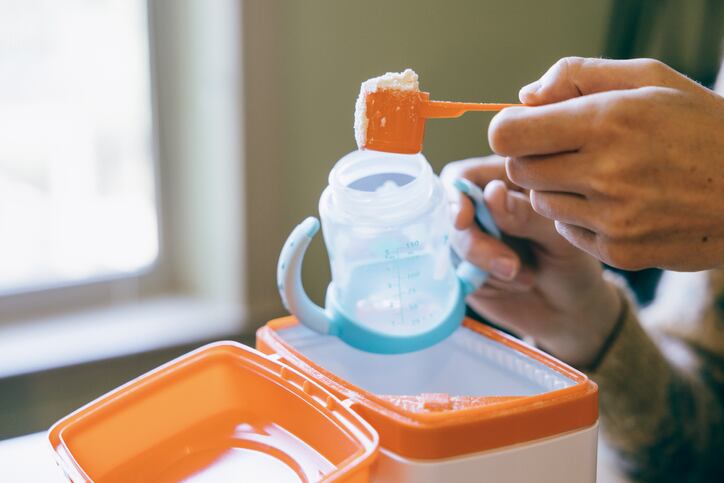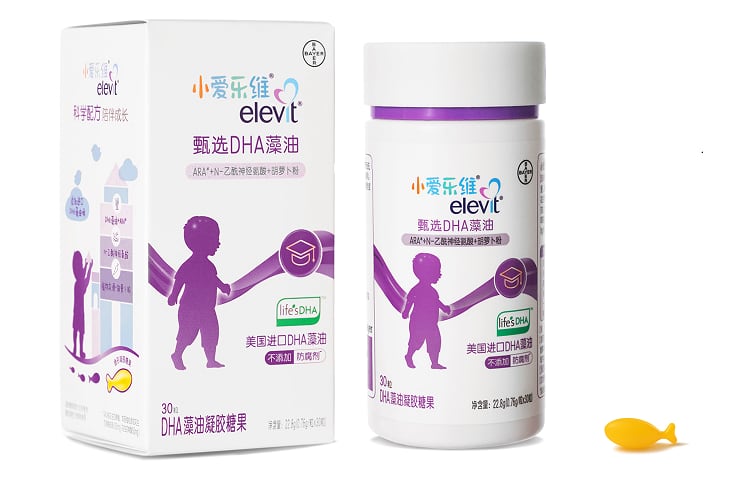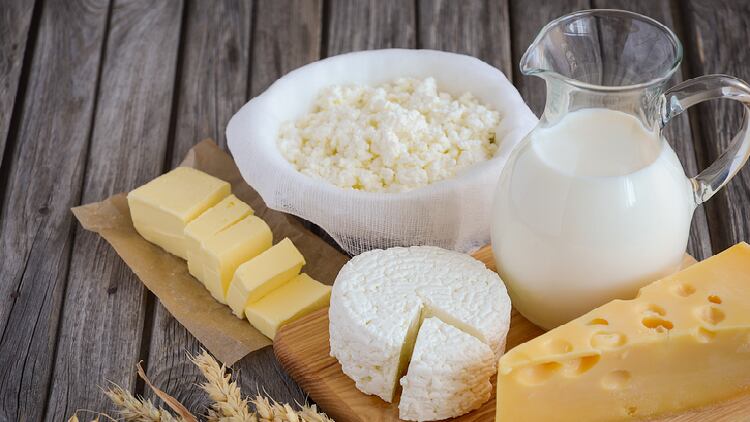All three companies received approvals for their 2'-fucosyllactose (2’-FL) ingredient, while dsm-firmenich received an additional approval for lacto-N-neotetraose (LNnT), another HMO component.
The approvals are closely watched as HMOs are seen as one of the latest trends in infant nutrition, but China, the most lucrative infant formula market in Asia-Pacific, had been slower than other countries in allowing the use of HMOs.
Infant formulas containing HMO, specifically 2’-FL, was first launched in 2016 by Abbott.
Aside from infant formulas, the Chinese authorities have also approved the use of these HMOs in follow-up formula, infant formula for special medical purposes, and formulated milk powder for children, based on the announcement from the National Health Commission.
The authorities have also set the permitted minimum and maximum HMO that could be added to the formulas, which is between 0.7 and 2.4 grams per litre for 2’-FL and between 0.2 and 0.6 grams per litre for LNnT.
A minimum amount was set to show the lowest level that infant formula companies could go to for the nutritional benefits of HMOs to be seen.
The maximum amount was set based on the average amount found in human breast milk.
Due to its production method, HMOs are known for its higher raw material cost as compared to other ingredients used to fortify infant formulas.
Currently, using genetically modified organisms to ferment HMOs is the most common production method.
A milestone for quicker approvals in the future
The first wave of approvals is seen as a milestone and subsequent approvals are expected to be completed quicker now that the authorities have established a harmonised set of standards for HMOs use in infant formulas.
The first wave of approvals came after the Chinese authorities conducted a public consultation on the use of these HMOs in infant formula last May.
“I think the approval process is considered relatively quick, because it is the first time that food additives made via synthetic biology technology are being approved [for use in infant formulas].
“This approval is a milestone,” Cathy Yu, general manager, food business division at Hangzhou-based regulatory consulting firm CIRS told NutraIngredients-Asia.
“I think in the future, the approval process will be quicker,” she said, adding that the authorities would prioritise the safety data of the HMOs when making the assessments.
Breakdown of the process
The ingredient supplier firms which obtained the approval also echoed Yu’s opinion, adding that the companies involved in the first round of HMOs have helped established harmonised standards and removed certain regulatory roadblocks.
The HMO approval process could be broken down into two parts, said Marta Miks, senior regulatory & scientific affairs manager, dsm-firmenich.
The first part will see the Ministry of Agriculture and Rural Affairs (MARA) assess whether the genetically modified strains used to ferment HMOs are safe.
For dsm-firmenich, this submission was made in April 2021 and approved in September in the same year.
Miks emphasised that the MARA committee would meet only twice a year. This means the assessment and approval speed would be dependent on when MARA conducts its meeting.
“MARA only meets twice a year. It is not established which month is that. You might have submitted for an approval in January and the meeting might be held in July. This means that the application could be in the system for many months.
“Sometimes, you could be lucky, and the meeting could be held the week after you have made the submission. That's why it's difficult to estimate the exact timeline for this stage,” she said.
Angela Lim, regulatory lead, ASPAC (Asia Pacific), at IFF, added that MARA was mainly concerned about the safety of the production strains used, since these were genetically engineered strains.
“They would want to see information on whether there's any residual production strains and whether those strains are alive, which are mainly safety-related concerns,” she said.
The second part will see the Center for Food Safety Risk Assessment (CFSA) assess the HMOs as nutrition fortifier under the food additive regulations.
This is a longer process as the CFSA would conduct several rounds of panel reviews and conduct a public consultation.

Aside from safety, the CFSA also wanted to make sure that there are harmonised specifications across the board.
“The authorities wanted to ensure that the multiple companies that did the submission were aligned in their specifications and their analytical methods, such as how we analyse the purity of the 2’-FL assays,” added Lim.
Overall, safety, tolerability, and whether the HMOs added could provide an additional benefit to infant formulas are the key points that the authorities look out for, said Gernot Stadlmann, head of the HMO Business Development Team at dsm-firmenich.
Throughout the process, he believes that the companies involved have helped cleared major questions that the Chinese authorities have.
This could in turn help speed up future approvals.
“Since GM organisms are used, how can we make sure and have a scrutiny process that checks the safety and tolerability of the HMOs produced? I will say this is a completely new process that needs to be developed in many markets, and among them China as well.
“I think in many aspects of the process, we, together with the other companies that have been involved in this process, have paved the way, and have taken out some of the major questions that were raised by the authorities and pre-empted that, so that in the future, hopefully, the approvals would go a bit faster,” he said.
On the other hand, Chr. Hansen and Friesland Campina are the other two companies that have secured approvals of their production strains from MARA.
Health benefits of HMOs
The HMOs are the third most abundant solid component of human breast milk, after lactose and lipids.
The complex sugars cannot be absorbed by the human body but could serve as prebiotics – food for the beneficial bacteria in the gut.
“The HMOs promote the growth of Bifidobacterium.
“What is unique to them is that they do this quite selectively and those Bifidobacterium are very essential in the first days of the development of the gut microbiota of babies,” said Stadlmann.
The Bifidobacterium is the main component of the infant gut.
When the Bifidobacterium feeds on HMOs, the process creates a cascade of reactions, such as the synthesis of short chain fatty acids that could nourish the gut lining and strengthen the gut barrier function.
This in turn deters the adherence of pathogens to the gut and their entry into the bloodstream.
Generally, HMOs are understood to benefit the infant’s gut health, immune health, with indications that they could support cognitive development as well.

For example, 2’-FL, being the most abundant HMO found in human breast milk, could act as a decoy for pathogens, said Marcus Gliwitzki, global product manager, Health, IFF.
“It mimics the structure of pathogens and therefore, pathogens cannot adhere so easily to the gut.
“Research has also shown that diarrhoea infections could be reduced when you supplement infant formulas with 2'-FL, as well as the modulation of the immune and cytokine response.
“In animal models, there's evidence showing that brain development could be positively affected by 2'-FL,” he said.
Preparations for other HMOs approvals
Preparations are underway for the approvals of the HMOs 3′-Sialyllactose (3’-SL) and 6′-Sialyllactose (6’-SL) for dsm-firmenich.
There are over 200 types of HMOs, and they can be categorised into three groups: fucosylated, neutral, and sialylated HMOs.
For instance, 2’-FL belongs to the fucosylated group, while LNnT belongs to the neutral group, and 3’-SL the sialylated group.
“We are working on an approval for two of our molecules, 3’-SL and 6’-SL, but we have yet to go through the process with the authorities in China,” said Stadlmann.
While more studies are required to understand their roles and differences, the current understanding is that the greater the diversity of HMOs present in the gut, the greater the benefits, Miks explained.
“Not every Bifidobacterium has the same enzymes to digest HMOs.
“Some Bifidobacterium prefers 2'-FL, some others prefer LNnT, and some prefer the sialyllactose.
“Therefore, the greater the diversity of HMOs present, the greater the bifidogenic effect that we can achieve.
“In other words, the combination of HMOs, by default, should be more beneficial than the individual HMO alone. There’s a reason why we have over 200 HMOs in the human breast milk,” she said.
Findings published in the Journal of Pediatric Gastroenterology and Nutrition showed that infants consuming formulas fortified with 2’-FL and LNnT showed a significant reduction in the incidence of lower respiratory tract infections.
There was also a significant reduction in the use of anti-fever medications and antibiotics in the first 12 months of life.
At least a year more for finished product launch
The first infant formula fortified with HMOs could be launched in the China market in the next 12 to 18 months.
This is because infant formula companies would still need to register their stage one to three infant formulas fortified with HMOs with the Chinese authorities before they are allowed to sell it.
The process of registering these new formulas could take more than a year, Celia Ning, director at Junlebao Dairy Group, one of the key domestic infant formula firms in China, told us.
She believes that the Chinese parents’ awareness of HMOs is “quite high”, especially since multinational infant formula firms have been selling such products into China via cross-border e-commerce.
“The MNCs have been doing consumer education for a few years now and I believe there is a certain level of consumer awareness of HMOs among the Chinese parents,” she said.
Junlebao to launch 2’-FL fortified children’s milk
Junlebao will be launching its first 2’-FL fortified children’s milk in China, it said on a pre-launch event last Friday (Oct 13).
To be launched under the brand name Xiao Xiao Lu Ban Quan Wei Ai Wei Lai (小小鲁班诠维爱未来), the pre-launch event was conducted with dsm-firmenich which supplied the 2’-FL ingredient.
Other ingredients, such as galacto-oligosaccharides (GOS), lactoferrin, calcium, vitamin D, vitamin K2, DHA, ARA, casein phosphopeptides (CPP), and lutein are also added to the children’s milk formula.
The formulation was made based on the understanding that 2’-FL and GOS in the ratio of 1:1 could benefit children’s health.
Ning explained that this combination could enrich the abundance of Bifidobacterium in young children as compared to the intake of dietary fibre alone.
“Based on studies, the addition of 2’-FL could increase the abundance of Bifidobacterium in the gut. It can also significantly increase the abundance of Bifidobacterium adolescentis.
“Bifidobacterium is especially important for infants aged zero to six, because they are involved in the training of the immune system, but they are in fact, beneficial throughout the different life stages.
“Based on Japanese studies, a lower abundance of Bifidobacterium is related to a faster pace of ageing and the onset of chronic diseases,” she said.





